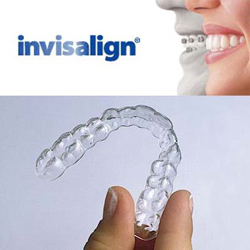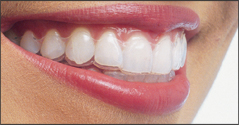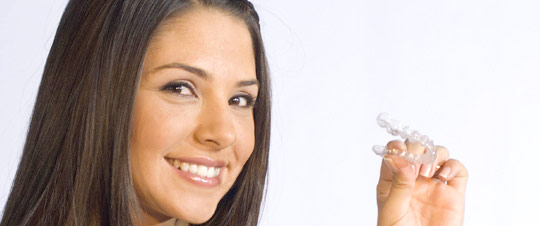There are many orthodontic appliances available to correct crooked or crowded teeth – from traditional metal braces to clear aligners. Invisalign is a type of clear aligner therapy which is becoming popular due to its transparent orthodontic trays.
What is Invisalign?
Invisalign is a teeth straightening alternative to traditional dental braces which uses a series of clear plastic removable orthodontic trays called aligners. The trays are custom made according to your dental needs and can be provided by trained orthodontists and dentists.
How does Invisalign work?
- The first step is the taking of dental impressions, x-rays and photographs of the individual’s teeth by a dentist or orthodontist.
- Then they are submitted to Align Technology in which a CT (computed tomography) scan of the impressions taken of the mouth will be done to create a three-dimensional digital image on a computer.
- The information is sent to Costa Rica and is manipulated by the staff according the treatment plan.
- Using the company’s software, virtual tooth movement in three dimensions can be created and staged as desired.
- The simulation is reviewed online by the orthodontist and modification or approval can be done.
- Once everything is finalized, a plastic resin aligner is manufactured for each stage of the computer simulation and delivered to the orthodontist.
- About 20 to 30 aligners will be produced and each set of aligners is worn for about two weeks. Aligners must be worn for at least 20 to 22 hours a day to avoid delaying the treatment process.
- As each set of aligners are replaced, the teeth will slowly move into the desired final position. A visit to the orthodontist every six weeks will be necessary to ensure treatment is progressing as planned. Average treatment time is about 9 to 15 months but will vary upon difficulty of case.
- After the regular aligner treatment is complete, Invisalign retainers made out of a similar plastic material are usually required to be worn to make sure the teeth stay in place.
What can Invisalign be used for?
Invisalign can be used if you have:
- Crowded teeth
- Gaps between teeth
- Deep bite (upper teeth excessively covers the lower teeth)
- Buck teeth (upper teeth sticks out)
- Under bite (lower teeth sticks out)
- Cross bite (upper and lower teeth are out of alignment)
- Open bite (gap between upper and lower teeth during bite)
Invisalign vs braces
What are the advantages of Invisalign?
- Invisalign does not require metal wires and brackets therefore it has a strong cosmetic advantage over traditional braces. The completely transparent aligners make the method popular not only in children and teenagers, but for adults as well.
- There will be fewer side effects compared to traditional braces. Resorption (shortening) of the roots of teeth as well as tooth decay may occur in those wearing dental braces because the braces cannot be removed for eating or cleaning.
- The aligners apply less force and less pain than fixed orthodontic appliances.
- As the aligners can be removed, tooth brushing and oral hygiene maintenance is much easier than when wearing traditional braces.
- Your food choice would not be limited for the aligners have to removed when eating or drinking.
- Since the aligners cover the teeth like a bleaching tray, they can be used for teeth whitening during treatment.
What are the disadvantages of Invisalign?
- Compared to other orthodontic appliances, Invisalign is a more costly alternative.
- Invisalign is largely dependent on the compliance of the wearer. The success of aligners is based on the cooperation and commitment of the wearer to wear the aligner for a minimum of 20 to 22 hours per day, removing them only during mealtimes and tooth brushing.
- If the wearer fails to comply with the minimum wearing hours or if treatment gets side-tracked, the next set of aligners may not fit. A new set of impressions and aligners would be required which will increase the initial cost.
- The system is not meant for all types of crooked or crowded teeth. Correction of severe teeth rotations, for example, would not be very successful.
- Since the aligners are removable, they can easily get lost and a replacement will add to the Invisalign braces cost.
- Although rare, there may be cases of allergy and toxic sensitivity reactions to the polyurethane material of the trays.
How much would Invisalign cost?
An accurate estimate would be difficult to provide since treatment costs vary depending on each individual and the problems they face. The national average cost for Invisalign braces is about $5,000 with a starting price of $3,500 but due to variation in regional overhead, there can be significant differences in fee charges.



Pingback: Can Invisalign Fix Buck Teeth? | Intelligent Dental